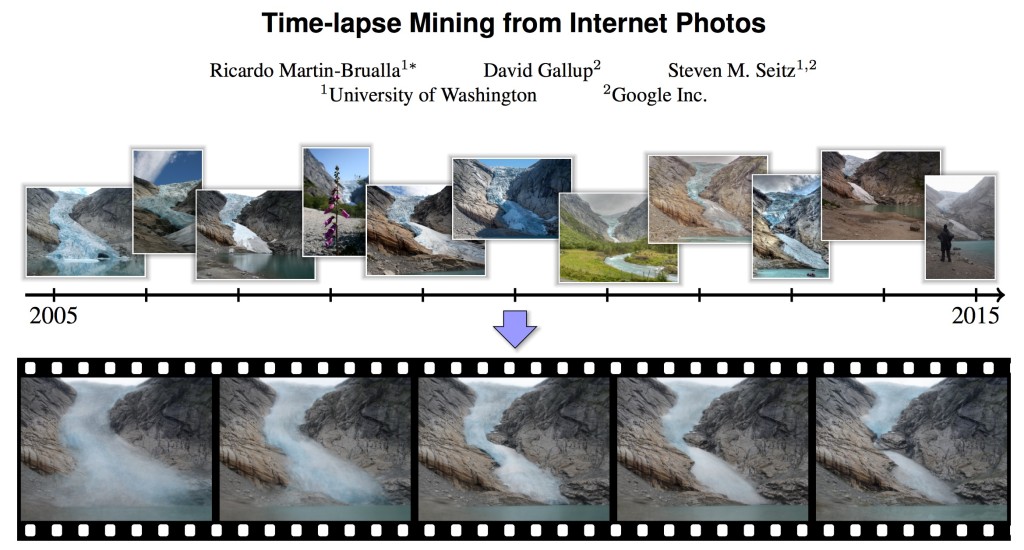
We introduce an approach for synthesizing time-lapse videos of popular landmarks from large community photo collections. The approach is completely automated and leverages the vast quantity of photos available online. First, we cluster 86 million photos into landmarks and popular viewpoints. Then, we sort the photos by date and warp each photo onto a common viewpoint. Finally, we stabilize the appearance of the sequence to compensate for lighting effects and minimize flicker. Our resulting time-lapses show diverse changes in the world’s most popular sites, like glaciers shrinking, skyscrapers being constructed, and waterfalls changing course.
But hey, who wants to read words when you can see it for yourself …
(Warning, the guy doing the audio needs to speak up a bit, you may have to crank up your volume)
They have a paper on it all … PDF here … and they explain it like this …
Creating high quality time-lapses from Internet photo sharing sites is challenging, due to the vast viewpoint and appearance variation in such collections. The main technical contribution of this paper is an approach for producing extremely stable videos, in which viewpoint and transient appearance changes are almost imperceptible, allowing the viewer to focus on the more salient, longer time scale scene changes. We employ structure-from-motion and stereo algorithms to compensate for viewpoint variations, and a simple but effective new temporal filtering approach to stabilize appearance. Our second significant contribution is a world-scale deployment, where we process over 80 million public Internet photos, yielding several thousand mined time-lapses spanning the worlds most photographed sites.
… and yes, they will be publishing more results and the code itself.
To do what they did must take a huge amount of computing resources and internet bandwidth …
We mined time-lapses from 86M public geolocated photos from Picasa and Panoramio. We clustered 120K different landmarks and computed 755K 3D reconstructions. We then discovered 10,728 time-lapses across 2942 landmarks, that contain more than 300 im- ages, using the camera selection criteria of α = 10 degrees.
There are billions of photos out there, but they only mined 86 million, and so a limiting factor here is that the pictures need to have both geolocation and date tags.
Today we see the world on a fixed temporal scale and so this opens up a new temporal window to the world around us, thus I’ll be looking forward to see what comes next.